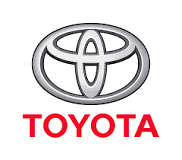
ResourceSpace has empowered our staff to find and access the content they need independently while allowing us to keep centralised control of assets and metadata.
Blog
17th December 2018

Positioning of a brand is a complex and ongoing process, which requires a multitude of marketing skill and a robust brand asset management (BAM) solution. This week we've been researching the different methods that some of the global car manufactures are using to help position their brands effectively online.
Many vehicle manufacturers are focused on production targets and sales and tend to be on the back foot when it comes to something like search engine optimisation. SEO often becomes a bolt on once your website has launched. So much energy goes into the web design and site content that SEO sometimes tends to be an afterthought and something which must be done to tick a box.
This is actually when problems begin, because if SEO is not an integral part of your digital marketing strategy and something which is just assimilated into each area of your branding, then it will not have the positive impact on engagement, sales and conversions that it could otherwise have had.
Some companies would argue that you don't need to invest particularly in SEO, especially for micro sites; as traffic to these sites is driven by offline marketing such as TV and outdoor banners. Whilst this is a valid point, the question is how much vehicle buying traffic is being left on the table when SEO is a secondary website consideration?
To illustrate the point we looked at the search volume for a market segment that many manufactures are focusing on - electric vehicles. In the USA alone there were 12,100 searches for the phrase "electric vehicles" last month on Google.com. The number of car manufacturers with websites ranking in the first two pages (that could have collected some of that traffic) for that phrase is 0 - which means that each manufacturer wanting traffic for that phrase is having to pay via Google Adwords.
Each paid click for the phrase "electric vehicles" currently costs $3.66, and that phrase is near the top of the funnel for visitors researching new vehicle purchases. This means that there are plenty more phrases further down the purchase funnel which are potential SEO targets too.
Good SEO is analogous with creating a positive user experience, which is why of course it's so important to search engines that want to serve up the most relevant usable content for their audiences. A global car brand image is a representation of how your audience feel about your cars. The aim of global car manufacturers is to create a positive user experience which reflects on the brand image. In order to do so, car brands should focus on content which is high quality, relevant and useful.
If you're a car manufacturer, your website user experience should reflect the car driving experience. If your website is responsive and easy to use and has relevant content which is easily accessible, then users will equate this with your car brand also. A positive interactive user experience which is fun and slick will subliminally help to associate your car brand with the same qualities in the mind of your audience.
A clear easy to navigate and useful website is vital if you want to attract the right audience and build brand loyalty globally. If users have a bad experience on your website, they simply won't want to return and it will colour their judgement of your brand. A website which is clear, simple, loads quickly and is easy to navigate will provide a much more positive experience than a one which is slow to load, busy and complex and where relevant information cannot be accessed quickly. Your website must be as usable and accessible via all mobile platforms as it is on desktop platforms.
Audience engagement means more clicks and more clicks translate to potentially higher conversions. If you hook in your audience by creating a strong brand and a great user experience with a great website which is user friendly and easily accessible you're half way there. If you manage to make it to a Google ranking of position number 1 you will receive on average 36.4% of all the clicks, which drops off to 1.5% if you are on Google ranking number 2. Tracking engagement via all social media platforms and what content users engage with can inform your brand positioning strategy and help you target market to the right audience.
Crucially it can also help car brands to provide their audience with the type of interactive fun content they crave. Interactive features and interactive video content can allow users to have control over how they view the video and from which point. An interactive video allows users to view videos and to consume their content however they choose. If you look at the new Honda interactive video, you can choose between 2 viewing experiences and see the darkside of the interactive video whenever you choose as it runs concurrently with a more innocent version. The whole video experience is incredibly interactive and all consuming compared to viewing a linear video.
You can also customise that content and localise it for different geographical locations to suit your demographic audience. Above all, you must tailor your content to address the audience you want to attract and metrics give you the tools to do this and find out what is working and what is not. It is of course vital to use data mining and market research to understand your audience profile before you begin to create your SEO strategy to position your brand.
Using video embedded in social media such as Facebook and Twitter will allow you to track user engagement and statistics and analyse exactly who engages with your content and which parts of it. Interactive video is a powerful tool to engage users, particularly for global car brands. Global car brands use video because it conveys emotion, multifaceted concepts, and can immerse the user in a rich experience. Videos can elicit gut reaction from their audience. Using video of a car can take viewers on a journey showing the internal and external driving experience and environment.
There is no better way to bring users with you on a journey than via the medium of video. It can explain difficult concepts and elicit emotion at the same time. Gut feeling is part of the inexplicable reaction people have about branding. Quite often brand is not something tangible, it is an emotional reaction and video very much helps to reinforce this feeling. Video can help embue brands with certain traits whether these are "rugged", sleek, luxury, practical or reliable.
Brand positioning via video can elicit 41% higher click through rates than static text. Video is dynamic and enables high conversion rates and clickthroughs with higher returns on investment. The Volvo interactive video is a case in point where it allows you to explore different features such as the cockpit, lights and glass roof or acoustics. Video is an immersive experience which engages users for longer so you can get your message across in a stronger way. People spend longer engaging with video because it is more hypnotic than just plain text.
If users dwell on your content then search engines note this and in turn your video has much greater worldwide penetration. Martech zone have shown that a video can increase google ranking number 1 by a factor of 53. Google is recognising the power of video and is featuring relevant clips in Search Engine Results Page Results (SERPS) because it knows the power of video for user engagement. Video optimisation therefore is exceptionally important to feature in the top SEO results.
ResourceSpace help a number of automotive manufacturers and companies in the vehicle retail space to look after their digital assets already - join them today and launch your free ResourceSpace instance >>
 |
 |
#BrandPositioning
#SEO
#DigitalMarketing
#BrandAssetManagement
#UserExperience
#OnlineMarketing
#IndustryNews
#BestPractice
#ResourceSpaceTips
#WebDesign